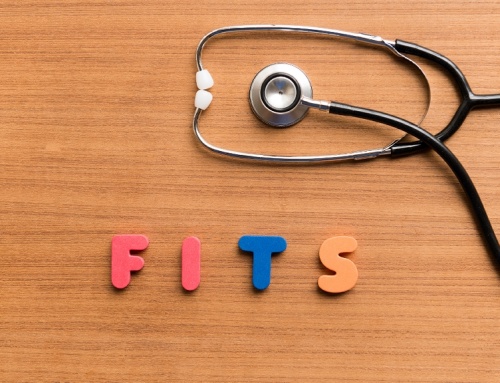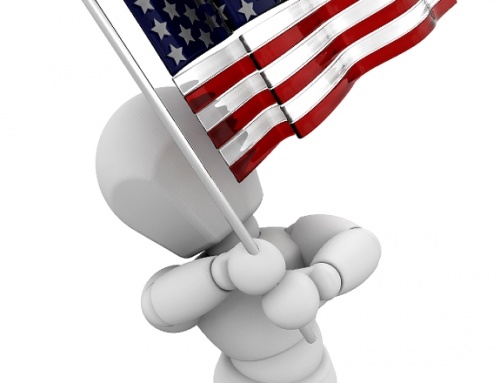Receptionist, secretary, or a client relations specialist, the person(s) at the front desk of a veterinary practice controls the most important business asset: client access. They have been trained to be the “caring heart” for patients not recently presented by the client; they can talk the walk at a minimum! Training and nurturing are required!
Client Relations deals with the Pet Parent and front door swing rate, while the Outpatient Nurse Technician deals with the client-patient pair as a veterinary extender, following the prescribed healthcare plan, ensuring client awareness with patient advocacy and promoting quality healthcare to extend and enhance the quality and duration of the animal’s life. These are the practice gate keepers – they can talk the walk at a minimum!
Inpatient nurses can actually walk the talk! The team-based healthcare delivery system allows doctors to be far more productive, while establishing pride and productivity at the staff level; this is a true win-win format for veterinary practices
LEVERAGING THE CLIENT RELATIONS SPECIALIST
The development of hospital zones (initially client relations, inpatient, and outpatient, and maybe later, resort and surgery) requires the reception team AND nursing staff to accept accountability for operations, and see the doctors as visiting consultants (doctors work a specific zone for only a half day, then shift zones). Shift changes occur when all restocking and cleaning is completed, or the shortfalls are transferred in an overt and apologetic manner. The problems associated with doctor-centered healthcare delivery (this is how we start all practices) can now be addressed by staff at shift change, from updated medical records and charge sheets (travel sheet), to restocking and cleaning; in short, the goal is to leave the hospital zone in better shape than you found it.
The Goal for the Client Relations Specialist (CRS) — to ensure all client contacts are timely and meaningful, by phone, written media, and electronic means. Maintains “client friendly” first impressions, be an advocate for what the patient ‘needs’, and supports the practice’s Mission Focus. Schedules client/patient access to all healthcare delivery systems based on practice facility capabilities, increasing the doctor’s productivity by scheduling staff appointments within the scope of the practice’s written Standards of Care (SOC) (verbal SOCs are never preferred). Concurrently, be operationally proficient with veterinary software, and work in harmony with the nursing staff, doctors, and community in general.
The Client Relations Team controls all access into the hospital, from parameters provided by the inpatient and outpatient nursing coordinators, based on the doctor staffing forecasted for that period. In short, the hospital operations are now OWNED by staff and the doctors do NOT mess with operational issues; doctors now only diagnose, prescribe, and surgicate! The core duties within the Client Relations Zone include, but are not limited to:
- booking and receiving clients – scheduling the facility resources, not specific individuals, to maximize client/patient access and service.
- hospitality functions for clients and community members
- total practice telephone service
- discharge (if not done by the outpatient team from the consult room)
- veterinary software operations, including electronic client contacts
- editing/sending newsletter and health alerts
- timely reminders (pet parent alerts)
- client access area maintenance and cleanliness
- medical record audits (organization as well as standards of care)
- recovered pet & recovered client programs (VCI monograph)
CLIENT RELATIONS SPECIALIST ‘Team-based’ SCHEDULING PARAMETERS
- The Outpatient Nurse (OPN) controls two consultation room (what used to be called exam rooms), one Outpatient Doctor, and shares one Pharmacy technical assistant float. The location of the laboratory determines who has operational control of that zone, and the potential staffing. Morning outpatient appointments are scheduled from 7:30 a.m. to 12:30 p.m., so the outpatient team (explained in Zoned Systems & Schedules VCI Signature Series Monograph) can leave the zone by 1300 hrs. The afternoon outpatient shift is from Noon to 17:00 p.m., and the evening outpatient shift (on practices with “late days”) is 1600 to close (e.g., 2000 hrs) (the evening doctor usually starts the shift with OHE and neuters from noon to 1500 and then has 15:00 to 1600 hrs for food and phone calls). The schedule is controlled and orchestrated by the Client Relations Team, with input from the nursing staff (and maybe the doctors or owners).
- The Inpatient Nurse (IPN) controls the treatment room, with surgery, imaging, dentistry area, wards and runs; a inpatient doctor, who may also be the surgeon in smaller hospitals, and one inpatient technical assistant float, as well as the animal caretaker staff. Morning inpatient rounds are at 7:00 a.m.. The morning outpatient system stops at 1230, and the afternoon inpatient rounds are over the lunch hour, about 1300 hrs, that means there are 30 minutes to overtly transfer the shift to the next team. Morning outpatient staff becomes afternoon inpatient team, so they can ensure their “day admits” are closed out as promised; the morning inpatient team becomes the afternoon outpatient team, so they can ensure they are available if there are questions at inpatient discharge. The p.m. doctor shift (noon to 8-9 p.m.) allows a larger practice the high density scheduling overlap for end-of-day rush times (common in bedroom communities and high dual income populations).
- The evening transfer of zones is assumed to be similar to the mid-day exchange, and assessed by the morning shift, and may require greater calibration coordination, but the habits built on the mid-day shift change between zones will eventually carry over to EOD changes.
- The key elements to accept in this transition of thought include:, 1) no one leaves their zone except for the technical assistants, 2) the client relations team establishes the schedule and balances the caseload based of facility resources available, 3) nursing staff has the schedule and keeps the doctors on schedule, 4) the doctors respect the schedules and the nurses, and 5) the hospital is scheduled (not the doctors) with a client-centered commitment for the social contract of meeting the clients expectations in a timely manner.
| THE 24-HOUR CLOCK
The 24-hour clock is needed for fail-safe communications in medical records. 6 p.m. is not as clear as 1800 hours. T.I.D. is often 0600, 1400 and 2200 hrs. The 24-hour clock is accepted as the STANDARD in human healthcare due to need for continuity between shifts. Get with the program! |
THE CLIENT RELATIONS TRIAD
The client relations zone ideally includes the greeter, telephone staff (usually off line), and a medical record audit floater; they should rotate positions within the zone every 4 to 5 hours, so no one gets “cold” in telephone service or greeting clients. Everyone is on wireless head sets, so communication is ergo-metrically enhanced. The scheduling must be done by computer, and most of the newer computer programs (like, EZVet, RxWorks, Cornerstone, Avimark, Impromed, IntraVet, etc.) have good clinical appointment capabilities, with variable boarding capabilities. The client relations zone team must also be the software gurus, able to resolve challenges with a simple phone call to their software vendor POC with their pointed and targeted question/issue. The doctors request appointments via the outpatient or inpatient nurse to the client relations reception team; doctors do not touch/adjust the appointing system in any manner. The doctor’s inpatient time, besides for telephone voice mail review, can also be a flexible healthcare delivery time, if no surgeries are scheduled (handle walk-ins (NEVER a ‘work-in’ since the term sets up a failure mind-set scenario), emergencies, and drop-offs through an “odd” consultation room).
In the slow season, only one of the two consultation rooms assigned to an outpatient doctor needs to scheduled, and walk-ins, drop-offs, and emergencies can then be used to fill the second room. If the two rooms are totally booked for a doctor/OPN team, the IPN team will see the walk-ins, drop-offs, and emergencies through the “odd” room, as well as be used to “catch-up” an outpatient doctor who has gotten off pace (coordinated by OPN and IPN through reception). The client relations triad of duties, reception, telephone, and discharge, must also have a mid-day shift change, so no one MUST work telephone for more than 5 hours at a time.
The Recovered Pet and Recovered Client programs, as described in the VCI Signature Series® Monograph, Client Relations Zone Operations will fund many more programs as well as the additional staff needed for zones and transitions.
- Recovered Pet – this involves the client standing at the front desk, and the client relations specialist screening the household database for a pet that is past due for being seen. It involves alerting the client that, “We have not seen Spike this year for . . .”, and waiting for a client response. This “one a day” is considered “easy” by most every front team surveyed. At an average transaction value $100, and one a day, 6 days a week, drive is $600 new income each week for 50 weeks, or $30,000 income; with 3 to 6 visits a year per pet, 3 x $30,000 is $90,000 income (for just one pet a day, it not require much overhead, so it is mostly pure net),
- Recovered Client – this involves the client NOT at the front desk, the one who did not come back as expected, and the client relations specialist screening the 3R (recall, recheck, revisit) database for a client that is past due for being seen. It involves picking up the 2000 pound phone (must weigh that much, or we would have been doing this before), calling the client, and saying, “The doctor and I missed you and Spike this week, is everything okay?”. It is not a missed appointment call, it is true concern. Over 50 percent of the called clients will respond with an apology for missing the appointment and request to schedule another, but the savvy staff will respond again, “That is okay, we just wanted to ensure you and Spike were okay?”. Just “one a day” is considered “easy” by most every front team surveyed. At an average 1.5 to 1.6 pets per household, the $90,000 income from a recovered pet becomes $135,000 (for just one pet a day, it not require much overhead, so it is mostly pure net).
- To look at $90,000, plus $135,000, or just under a quarter million dollars a year, being missed is staggering, until you remember the AAHA Compliance study that says the average companion animal practice loses in excess of $630,000 a year per doctor due to the lack of making the patient ‘needs’ significant and known to the client.
- At a 50 percent success rate, this is still over $110,000 a year for OVERTLY caring about your clients and patients, without any significant additional costs. One caution, do not try to ‘recover’ clients outside the one-week window, they perceive you have already forgotten them.
CLIENT RELATIONS CONTINUING EDUCATION
Training of client relations staff is the most neglected CE position in most veterinary facilities, yet they have the highest amount of client contact. Team development can be used to refine the narratives (e.g., use the Milo Frank text, “How to Get Your Point Across is 30 Seconds or Less”). These must be rehearsed with the nursing staff to ensure a common position is being shared with clients, and must be based on a consistent Standards of Care and Inviolate Core Values. To handle walk-ins and emergencies in a professional manner, there must be a great trust with nursing staff’s support; also, reminders and follow-ups are shared with the nursing staff. Setting the “need standard”, body language when doctor is behind schedule, post-consult discussions on care and follow-up, fee collection and the departure “last impression” need development.
The texts, tapes, and workbooks from AVMA and AAHA are excellent tools, and when tailored to the veterinary-specific needs of the specific practice, are great training aides for the initial 90-day orientation and training phases. This person has the MOST local continuing education training opportunities of anyone on staff: banks and hospitals are always running CE for their front line people, and in most metroplex communities, there are short day courses, and even Dale Carnegie courses on people-to-people skills.
In team training, most VMAs neglect this critical team member, so team-based CE experiences, like the VCI Shirt Sleeve Seminars, hosted by VCI twice a year (1995 to 2007) become a great reward and recognition for these unsung heroes and heroines of veterinary client relations; these CE experiences also allow staff bonding and better planning ownership. Never allow a “them and us” environment to emerge; utilize the CRS team to help OPNs with narratives, and the IPN team to help the CRS and OPN understand the needs and procedures. The ‘training day’ concept discussed with the SYNERGY MODEL, two issues ago, is an excellent starting point (also discussed in the Practice Operations VCI Signature Series monograph and the new Team-based Healthcare Delivery text in the VIN library available for a free down-load).
OUTPATIENT NURSE (OPN)
The first challenge is nomenclature; a bias in the American culture. In the UK, Australia, New Zealand, South Africa and other English speaking Commonwealth nations, what we call technicians and technologists are termed Veterinary Nurses. Client response to the term “nurse” is acutely significant, and their trust is immediately elevated. Some States have caved into medical nurses and prohibited the term ‘veterinary nurse’, starting the slippery slope for eliminating the term ‘doctor’ for veterinarians. The terms such as nurse sharks, nurse bees, nurse ants, and nursing care have not been addressed in those States, yet in the State of Colorado and others, ONLY licensed, certified or registered technicians may be called “technician”, and other staff members have to be assigned other titles (e.g., veterinary nurse, veterinary assistant, etc.). For the purposes of this discussion, I will define Outpatient Nurse Technician as a skilled communicator accountable for consultation room activities (see the Blackwell Text, Building The Successful Veterinary Practice: Programs & Procedures (Volume 2), for a greater in depth discussion).
The development of hospital zones (initially client relations, inpatient, and outpatient, and maybe later, resort and surgery) requires the client relations (reception) team AND nursing (technician) staff to accept accountability for zone operations, and see the doctors as visiting consultants (doctors work a specific zone for only a half day, then shift zones). Shift changes for staff members occur ONLY after/when all restocking and cleaning is completed, or the shortfalls are transferred in an overt and apologetic manner.
The Goal for the Outpatient Nurse Technician (OPNT) — to allow the consult room encounters to go smoothly, to increase the doctor’s productivity, and to give the client another healthcare provider to talk to, in the consult room and on the telephone.
The Outpatient Nurse Technician (OPNT) is responsible for escorting the patient and client into the consult room, completing the interviews required for baseline client and patient information, doing the history review of the client’s concern, conducting the TPR-BP and wellness exam, and providing the delivery of healthcare information as directed by the veterinarian. The skilled OPN also provides whatever else the client may need. They act as a friend to the client and have genuine concern for the companion animal. Nurses always act, dress, and look like a member of a superior healthcare team. They must always remember that they are “on stage” and that their actions, appearance and words are not missed by owners. They are impressive simply because they are friendly and they know “their stuff.”
Duties usually allocated to the Outpatient Zone include, but are NOT limited to:
- Pharmacy-Lab forward to reception
- Client/patient outpatient movement
- Three-to-five minute asymmetry exam before the doctor enters
- Life Cycle Consultations (asymmetry exam) w/parasite checks
- Transcribing the doctor’s healthcare plan directives
- Puppy/kitten programs (e.g., vaccine, fecal, preventatives, etc.; over 40% do not stay on prescribed frequency required for full protection)
- Outpatient client education, include medication administration
- Nutritional Advisor, including body condition scoring (BCS – 5 point or 9 point), monitoring feeding trials and assisting pet parents in re-feeding programs.
- Parasite Prevention & Control advocate
- Dental screening, including recording the four levels of dental needs
- Behavior management assistance to clients
- Monitoring genetic predispositions (upei.ca/cidd/intro.htm), over-40 surveillance, Golden years and other age-related programs (cardiovascular, dry eye, arthritis, diabetes, thyroid surveillance, etc.)
- Supervision of pharmacy/lab technical assistant float
- Sequential Laboratory sample follow-up and surveillance
- Client recalls for outpatient and Problem List follow-up
- Inventory management
- Outpatient zone maintenance and cleanliness
- Title 21, CFR (federal pharmacy rules & surveillance programs)
The Mission of the Outpatient Team
With the above philosophies, it must be obvious that we believe OPNs are critical to effective healthcare delivery. We have said it many times, in many seminars, in many areas of this country and internationally, ” . . . veterinarians are accountable for producing the gross BUT it is the staff that can produce the net!” The effectiveness of the staff is directly proportional to the level of trust for which they have been trained. If they have not been trained to be trusted, or if the doctor corrects them in front of clients or other staff members, the healthcare delivery team system will be non-functional.
What are the three basic Outpatient Nurse Technician concepts which must be addressed during the nurturing process and skill development sessions? They include the following needs, but are not limited to the examples provided:
- Meeting client needs.
This is” job one”, as Lee Iacocca might say. Effective technicians are able to pick up on client needs for their pets (arthritis, behavior, fleas, etc.) and tell the doctor, verbally usually, and always in the record with a “need box.” They are knowledgeable about our products, programs, and services and how they may help the pet, for that is” job one” for the clinic. Example:
Owner: “Duke’s getting older. He sure does have a hard time getting around these days.”
Nurse: “I see what you mean. I’ll make a note in the record for the Doctor to discuss our Arthritis Therapy Program with you.”
(OPNs will need to be trained on each of these programs BEFORE they emerge in the practice plan.)
- Meeting the doctors needs.
The most useful as well as the most useless technicians are the ones who always seem to be around the doctor. The great OPNs seem to know beforehand when clippers, or an otoscope or a woods lamp (etc, etc.) is needed. They are seemingly always available for the doctor. The poor ones wait to be asked. In other words, the focus of the Outpatient Nurse Technician is the outpatient doctor-client encounter. Make it run smooth and easy. Do not get “lost” in cleaning up the back or assisting in surgery. (Other things can be done but only with one eye on the lookout for the doctor.) By keeping this focus, a good Outpatient Nurse Technician can make the most crowded and complicated day run smoothly.
- Meeting client relations needs.
The Outpatient Nurse Technician (OPNT) must also have an antenna up for the client relations and the reception room. This is especially true when completing the New Client Welcome Form or the Patient Data Cover Sheet; these are often consultation room interview requirements to keep things flowing. The skilled OPNT always know how many clients are waiting (none hopefully) and which consult rooms are empty. The great OPNT is always “chomping at the bit” to get the clients into the room! The OPNT escorts the patient client pair to discharge and verbally transfers their care to a willing client relations specialist before leaving them there. They realize how upsetting it is for the client relations specialist to have a client wait either for a discharge or for an appointment.
In short, the OPNT is the “glue” that holds the continuity of the outpatient schedule together. This is no small feat. The OPNT must know what’s going on in the client relations specialist’s mind, the client’s mind, and the doctor’s mind and see to it that all their needs are met. They never become diagnosticians but they are always counselors and “hand holders” for those needing someone who cares.
Needed Scheduling Actions:
- Zone the hospital staffing plan
- Outpatient schedules have two columns (rooms) per shift doctor
- Outpatient doctor and Outpatient Nurse work two consultation rooms
- OPN escorts all clients/patients from receiving to consultation room
- There is a Pharmacy/Laboratory technical assistant float
- The OPN and OP doctor NEVER leave front during shift
- The OPN keeps the doctor “on schedule” for the entire shift
- There should be a day drop-off bank of cages close to front
- Client Relations schedules inpatient care regardless of doctor
- Inpatient doctor and Inpatient Nurse (RVT) work treatment/surgery; the IPN
(inpatient nurse and IP doctor NEVER leave back during shift
- There is always a treatment/surgery technical assistant float
- Shifts are half day, changing the doctor’s role (+/- CVT/RVT/LVT/nurse)
Morning outpatient doctor becomes afternoon inpatient doctor, thereby following an “day admits” that were done to ensure continuity of care
Morning inpatient doctor becomes afternoon outpatient doctor, thereby being able to
discharge the morning drop-offs and surgeries
Noon doctor (on three doctor days, this is the noon to 8 evening shift) starts with spays and neuters (noon-3 p.m.), has an hour for phone/food, then does evening outpatient (4-8 p.m.) – hint: more effective is the 24 hour clock (e.g., 1600 hrs to 2000 hours).
- IPN & doctor conducts does rounds at 8 a.m. and 1 p.m., and then the IPN keeps the doctor on schedule
- ONLY the technical assistants (floats) move between zones, moving patients and support each other
- Details of doctor scheduling are discussed in the VCI Signature Series monograph, Zones Systems & Schedules. The doctor schedules need to be done six weeks in advance so all other staff schedules can done 30 days in advance by the coordinators.
- The basic key to “system success” is building on the intangibles within the staff, training to trust, building on respect, enhancing pride, promoting team fit/harmony, and establishing a self-healing practice culture.
- The tangible aspect is to start to schedule the hospital rather than the doctors, assign the staff primary patient healthcare duties by zone (supporting clients. Patients and the attending doctor), and respect the social contract (appointment and needed care) given to clients as they access the hospital.
A Comment on Using the Outpatient Nurse Technician
School trained or home grown, trust comes from nurturing your team. It is not the school that makes the Outpatient Nurse successful; it is the practice which makes the veterinary healthcare delivery team successful. Believe they can and they will . . . believe they can’t and they won’t. The difference is in the belief, trust, and accountability. Hire for attitude and develop the environment to nurture the attitude. Everyone will win!
Leveraging with the Inpatient Nurse (IPN)
Whether supporting a store front or a large multi-doctor facility, an Inpatient Nurse Technician/Technologist becomes akin to a circus ring master; they ensure all the in-facility functional areas are running well and concurrently for maximum effectiveness. Here’s a little practice philosophy from our observations, beliefs, and experiences:
The Goal for the Inpatient Nurse/Technician (IPN) — to allow the treatment tables, surgery, and imaging capabilities to operate effectively and concurrently, for all healthcare delivery systems to go smoothly, and to increase the doctor’s productivity. Concurrently, give the patient an advocate who will keep the animal’s well-being, health, and safety foremost in their mind.
The Inpatient Nurse/Technician (IPN) is responsible for knowing the status of every animal in the facility, maintaining the white board in treatment to reflect the current status of each animal, and to ensure all healthcare delivery is documented into the medical records (and invoiced in an accurate manner). With certified/registered technicians, they can also do admissions for known patients as well as about 70 percent of the discharges. The inpatient nurse will ensure the rounds are conducted and prioritized by the appointed time to ensure the doctor has minimal “waiting time”, and will ensure each patient is recovered and their steward kept informed on a real time basis, according to hospital expectations and promises. The IPN will ensure scheduled drop-offs and surgeries are called the day before, and provide clients the delivery of healthcare information as directed by the veterinarian. The skilled IPN also provides whatever else the doctor or client may need. They act as a friend to the client and have genuine concern for the companion animal. Nurses always act, dress, and look like a member of a superior healthcare team. They must always remember that they are “on stage” and that their actions, appearance and words are not missed by owners. They are impressive simply because they are friendly and they know “their stuff.”
The Benefits of the Inpatient Team
Dr. J.M. called and needed help immediately. He had met with his accountant and committed to a gross income increase of $107,000 in the coming year . . . he called because he wanted to know how to produce that much money in his 2 doctor, 850 transactions a month, storefront, companion animal practice. As a consulting partner, we had established the four dental grades, with grade one (1+) being brown molars with white incisors, with no gingival detachment (a twenty-minute prophy for skilled inpatient staff); Dr. J.M. had never pursued grade 1+ dentals and had not deemed it important to start, even after the consultation had started. With the above philosophy, we started a math problem: grade 1+ dental ($181 door to door) x 3 per day (strictly an early nursing function) . . . then multiply that by 20 days in a month . . . then multiply by 12 months. Dr. J.M. said “$130,320″ . . . and Tom Cat said, “What you going to do with the extra dollars over budget being driven by your nursing staff?” For the first time, Dr. J.M. realized what the consultation report and Tom Cat had been trying to tell him for six months; grade one dentals are an inpatient staff function while he is on outpatient, so they are almost pure net income (actual cost, without sunk cost factors, is less than $35, which includes the dental hygiene staff member).
These factors even work in a one doctor practice! It is obvious that an inpatient team doing Risk Level 1 and 2 anesthesia for grade 1+ and 2+ dentals can produce major income while the doctor is on outpatient duty. It also applies to radiology; the films can be taken and hung, ready for the doctor, while the doctor is on outpatient duty. We know that morning t.i.d. and q.i.d. treatments, as well as 100% patient TPR-BP and review, should be done before the inpatient doctor even arrives for rounds. We sincerely believe that adequately trained nurse/technicians are critical to effective healthcare delivery. The effectiveness of the staff is directly proportional to the level of trust for which they have been trained. If they have not been trained to be trusted, or if the doctor corrects them in front of clients or other staff members, the healthcare delivery team system will be non-functional.
Inpatient Rules of Thumb
The linear thinking practice expects the doctor to come into the treatment room and tell everyone what they should be doing to support him/her. The Zoned Practice has an IPN sharing with the arriving doctor what the case priorities are, based on practice protocol; usually complexity first for morning rounds, and RTG (Ready To Go) times for afternoon rounds.
The linear thinking practice usually has a doctor running behind schedule, because everyone is following the doctor and asking questions, or waiting to be told what is expected next. The Zoned Practice has an IPN coordinating the inpatient team staff in patient-based healthcare delivery, regardless of the doctor’s location, and is ready to gear up for surgery or doctor diagnostics based on a pre-coordinated plan with the doctor. When the zoned practice operations are ‘owned’ by staff, the IPN also coordinates with client relations for walk-ins and emergencies, the outpatient nurses for “catching-up” a lagging outpatient doctor, and handles 70 percent of the discharges back to the pet parents.
The linear thinking practice usually does not need an inpatient white board or other prioritization system, since the doctor is “shooting from the hip” based on the crisis of the moment. The Zoned Practice has a plan, and works the plan; the IPN adjusts the plan based on caseload demands. No one is hovering or waiting for the doctor to speak (or lose their cool and yell). The IPN and assistant inducts and preps the patients for the dental hygiene specialist and surgical nurse, as well as assume accountability for surveillance of recovery from anesthesia, thereby maximizing the workload productivity of two other associated zones.
In the linear thinking practice, animal caretakers mow the lawn when the animal census is down; sometimes they change light bulbs and wash walls for diversity. In the Zoned Practice, the IPN adjusts healthcare workload based on patient census, and uses the animal caretakers as technical assistants when the census is down. Some of these animal caretakers are the staff building blocks (via distance learning and in-service training) of the future and have a career progression in a ZONED practice, because the IPN and OPN want to develop additional staff for the busy rush times and practice growth support teams.
Needed Scheduling Actions:
- Inpatient Zone Outcome Accountabilities:
- Supervision of technical assistant float
- +/- Laboratory operations
- Treatment Room (e.g., o.d., b.i.d., t.i.d., q.i.d., IVs, etc.)
- Imaging (in larger practices, there may be an imaging tech) – all DG2+ NEED oral imaging!
- Surgery (in medium practices, there may be a surgery tech)
- Dental (in even smaller practices, there may be a dental tech) – all DG2+ NEED oral imaging!
- Pack Prep (once trained, often the IPN assistant, +/- caretakers)
- Inpatient White board (with Priorities, treatments/procedures, RTG time and Discharge Instructions)
- Wards and Rounds (0800 – prioritize the day and 1300 – meet RTG expectations)
- Inpatient zone maintenance and cleanliness
- Title 21, CFR
- Zone the hospital staffing plan
- Outpatient schedules have two columns (rooms) per shift doctor, working two consultation rooms, and notifying IPN when the outpatient doctor is falling behind schedule (IPN team picks up vaccine appointment or similar wellness case to help catch-up schedule).
- There is a Pharmacy/Laboratory technical assistant float who moves animals from outpatient to an inpatient cage and logs them on the White Board, without a priority (IPN function), by location
- The IPN keeps the inpatient doctor “on schedule” for the entire shift, as well as the surgeon, if they are two separate doctors.
- There should be a day drop-off bank of cages close to front, which are also used for staging the Ready to Go (RTG) patients pre-discharge.
- Client Relations schedules inpatient care by facility space, regardless of doctor
- Inpatient doctor and Inpatient Nurse (RVT) work treatment/surgery
- The IPN and IP doctor NEVER leave back during shift
- There is always a treatment/surgery technical assistant float
- Shifts are half day, changing the doctor’s role (+/- CVT/RVT/LVT/nurse)
- Morning outpatient doctor becomes afternoon inpatient doctor, thereby following an “day admits” that were done to ensure continuity of care
- Morning inpatient doctor becomes afternoon outpatient doctor, thereby being able to discharge the morning drop-offs and surgeries
- Noon doctor (on three doctor days, this is the noon to 2000 hrs evening shift) starts with spays and neuters (noon-1500 hrs), has an hour for phone/food, then does evening outpatient (1600 – 2000 hrs)
- IPN conducts does rounds at 0800 and 1300 hrs, and then the IPN presents the plan to the inpatient doctor, gets confirmation, then keeps the doctor(s) on schedule
- ONLY the technical assistants (floats) move between zones, moving patients and support each other
The basic key to “system success” is building on the intangibles within the staff, training to trust, building on respect, enhancing pride, promoting team fit/harmony, and establishing a self-healing practice culture. Details of doctor scheduling are discussed in the VCI Signature Series monograph, Zones Systems & Schedules. The doctor schedules need to be done six weeks in advance so all other staff schedules can done 30 days in advance by the coordinators. The tangible aspect is to start to schedule the hospital rather than the doctors, assign the staff primary patient healthcare duties by zone (supporting clients. Patients and the attending doctor), and respect the social contract (appointment and needed care) given to clients as they access the hospital.
A Comment on Using the Inpatient Nurse Technician
The inpatient nurse technician is usually the most skilled member of the nursing staff; she/he may concurrently be the Training Coordinator for the team. School trained or home grown, trust comes from training people to the point of being trusted, then nurturing the team members to establish respect, pride, and practice harmony. It is not the school that makes the Inpatient Nurse successful; it is the practice which makes the veterinary healthcare delivery team successful. Believe they can and they will . . . believe they can’t and they won’t. The difference is in the belief, trust, and accountability. Hire for attitude and develop the environment to nurture the attitude. Everyone will win!






